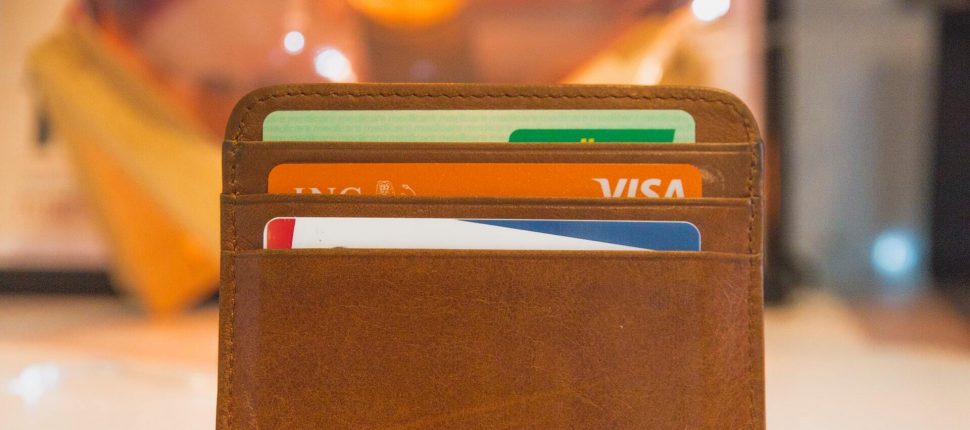- >Best Crypto Credit Cards
- >TenX Visa Card Review
TenX Visa Card Review 2025
Pros & Cons
Pros
Company behind the card was founded in 2015
Incubated by PayPal
Accompanying mobile app makes it easy to manage the TenX Visa card
A TenX virtual Visa card is available
It’s a Visa card, so it can be used in payment terminals all over the world
Cons
Only supports 4 crypto assets
No rewards program for the card
The issuing bank for the TenX Visa card faced solvency issues in 2020
Currently only available in 3 countries
What is the TenX Visa Card?
The TenX Visa card is a project that has been many years in the making. Founded in 2015, TenX is focused on taking the crypto assets that people like to speculate on via various exchanges and making them more easily used as forms of money that can be used in people’s everyday lives. There are no rewards associated with this card, so it’s really targeted at crypto enthusiasts who just want to be able to spend their Bitcoin, Ether, or Litecoin at the places they normally shop and use a credit card. While TenX has issued two different proprietary tokens related to its overall platform, these two tokens do not get in the way of the functionality of the TenX Visa card.
What are the Benefits of the TenX Visa Card?
The main benefit that you get when using the TenX Visa card is the ability to instantly convert your Bitcoin, Ether, Litecoin, or PAY tokens to fiat currency that can be spent anywhere Visa is accepted. When compared to some of the other crypto debit card options on the market, there aren’t really any other benefits to be seen. There aren’t any cashback rewards available on purchases made with the card, and there aren’t any other types of benefits made available to cardholders either.
On the plus side, users are not required to stake a proprietary token that could lead to heavy losses in order to use the TenX Visa card. Holders of TENX are also able to receive payouts from profits the company makes via the TenX platform. Crypto users who just want to be able to spend their Bitcoin or Ether without having to stake a proprietary token may find the boring nature of the TenX Visa card attractive.
Potential TenX Visa Card Dealbreakers
There aren’t really any incentives to use the TenX Visa card as compared to other crypto debit cards or even traditional credit cards on the market. The lack of any sort of cashback rewards will send most people looking elsewhere in terms of figuring out how they can start spending their cryptocurrency on normal, everyday expenses.
On top of the lack of rewards and benefits programs, the TenX card also faced an issue where their card was unusable for a period of time in 2020 when the financial institution that issues the card was facing solvency issues. These issues, at least as they related to the TenX Visa card, have since been resolved, but the association with Wirecard Card Solutions does not inspire confidence, especially when the TenX wallet operates in a custodial manner.
For now, the TenX Visa card is only available in Austria, Germany, and Singapore, which will be a dealbreaker that is out of the control of potential customers.
Finally, one last potential dealbreaker to consider with the TenX Visa card is the lack of extensive crypto asset support. Currently, Bitcoin, Ether, and Litecoin are the only popular coins that are supported by the platform.
Is the TenX Visa Card Right for Me?
The TenxX Visa card could be an option for crypto users who simply want a way to spend their cryptocurrency holdings via a crypto debit card. However, if you like to hold a wide variety of different crypto assets, then you’ll want to look elsewhere, as there are only four crypto assets supported by the TenX platform in total. If you’re someone who is basically only interested in Bitcoin and Ether, then the TenX Visa card may be an attractive option. However, you should also look into the fees associated with TenX’s crypto debit card offering and compare them to some of the other simple crypto debit card options before making a commitment.
TenX Frequently Asked Questions
The issuer of the TenX Visa card is Wirecard Card Solutions. In 2020, TenX cardholders had their accounts frozen due to an issue at this financial institution. At the time, Wirecard was facing a scandal where the company lied to auditors about $2.1 billion worth of money that they had in their books. Wirecard Card Solutions eventually filed for insolvency. In the end, it turned out that TenX customers’ funds were safe, as the cardholders’ funds were held in a separate bank account.
The first fee to think about when it comes to the TenX Visa card is the cost of obtaining the card in the first place. This cost is $15 or 15 EUR, depending on where the customer is located. For virtual cards, there is an issuance fee of $5 or 5 EUR. The initial fee for getting a TenX crypto debit card can be paid via BTC, ETH, or LTC.
There is also an annual fee of $10 for using the TenX Visa card. However, this fee is waived for the first year for all customers. Additionally, the fee can be waived in future years if the cardholder uses the debit card for at least $1,000 worth of spending activity during the year.
In terms of interacting with an ATM, there is is $3.25 fee per withdrawal for cardholders in APAC countries, while a 3 EUR fee is charged for cards issued in the European Union. As always, it’s important to remember that ATM operators usually also charge their own fees for cash withdrawals.
Finally, perhaps the most important fee to worry about is the in-app exchange rates when converting between crypto and fiat currency. According to TenX, these fees are based on the mid-market rate that the company pulls from a variety of exchanges at the time of the trade, in addition to a spread on the exchange rate charged by TenX. TenX does not list a flat exchange fee on their website, but users of the TenX app are able to see the exchange rate in the app before they agree to make a trade.
The TenX Visa card is not available in the United States. Potential users residing in the European Union are able to create TenX accounts and get those accounts verified, but the only countries in the world where a card can actually be ordered by new customers at this time are Austria, Germany, and Singapore.
The spending and ATM limits on the TenX Visa card depend on the country where the card was originally issued.
For cards issued to residents of an APAC country, there is a daily spending limit of $10,000, a weekly spending limit of $15,000, a monthly spending limit of $25,000, and a yearly spending limit of $150,000. For ATM use, there is a daily withdrawal limit of $1,500, a weekly withdrawal limit of $15,000, a monthly withdrawal limit of $25,000, and a yearly withdrawal limit of $150,000.
For residents of the European Union, there is a spending limit of €10,000 per day, €20,000 per week, €20,000 per month, and €100,000 per year. For ATM withdrawals, the limits are €1,000 per day, €2,500 per week, €2,500 per month, and €15,000 per year.
There are also limits on the number of transactions that a user can make per day, week, month, and year.
TenX is somewhat unique in the Bitcoin debit card space because the platform actually has two proprietary tokens associated with it. First, the PAY token, which was created by way of an initial coin offering near the height of the hysteria around ICOs more generally in 2017. TenX had a number of aspirational use cases in mind for the PAY token when it was first created, but the team appears to have run into some regulatory roadblocks along the way. The utility of the token today is unclear.
The reason for TENX’s existence is a bit more clear, as profits made by the company behind the TenX platform are paid out to TENX token holders. These payments are denominated in PAY. It should be noted that the amount of money sent to TENX token holders is up to the TenX board, and TENX tokens do not represent shares of TenX. This disconnect between TenX’s actual profits and the amount of money that is sent to TENX token holders should be viewed as a red flag for any potential investors.
Currently, there is not much interaction between the TenX Visa card and the two proprietary tokens created by TenX. However, it would not be surprising to see a staking requirement for one or both of these tokens be added to the platform in a situation where cashback rewards and other benefits are enabled for TenX cardholders.

